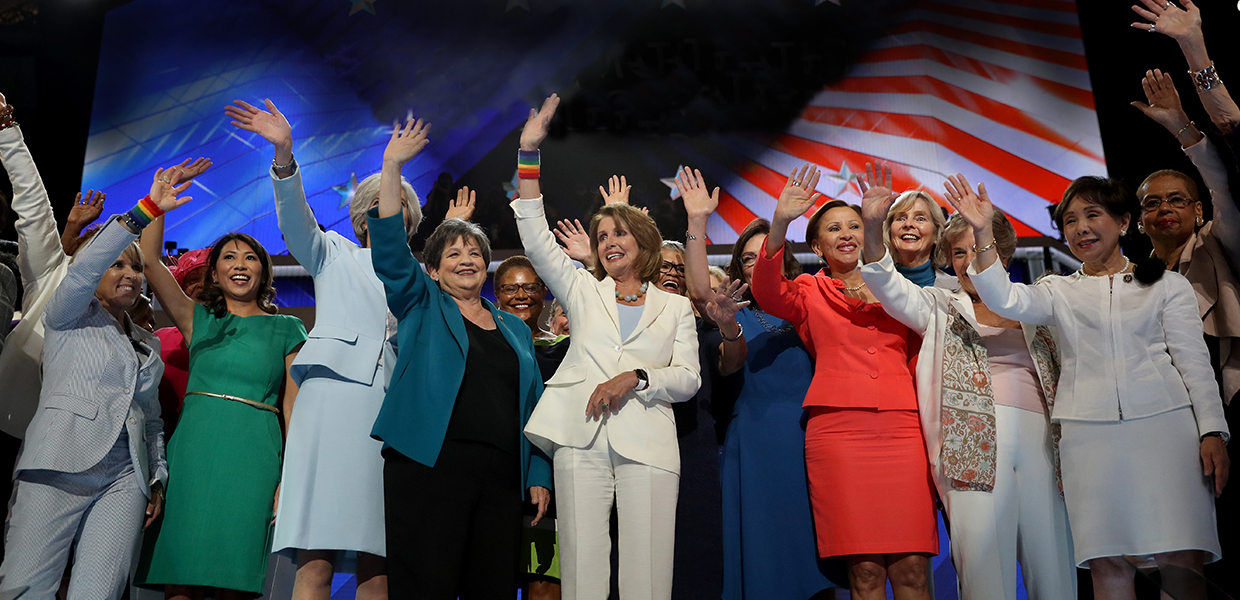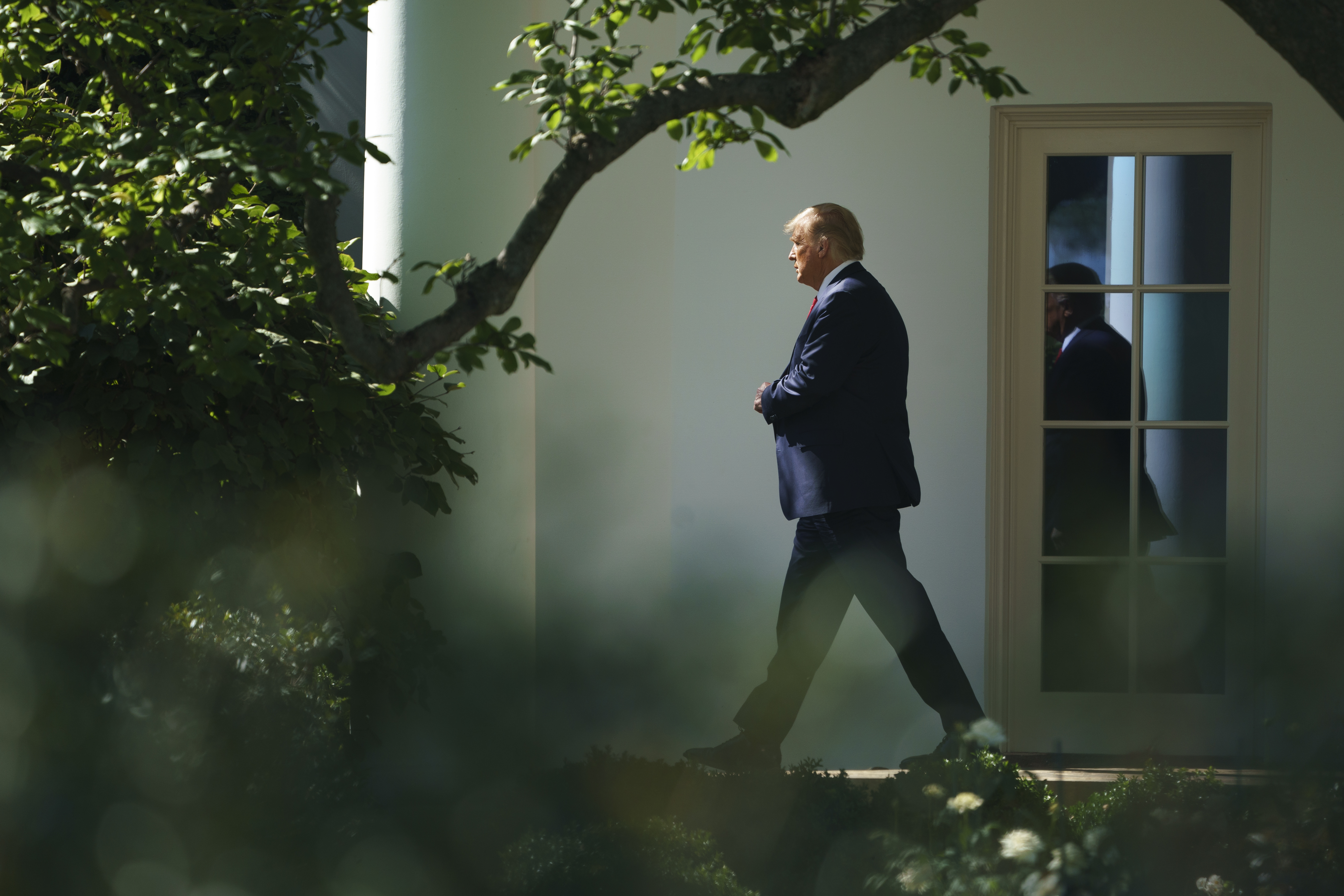Can female politicians make America healthy again?
Recent studies show having women in government is good for a nation's longevity


This year, a record number of women entered public office. In the U.S. House of Representatives, 102 women, plus four non-voting female territorial delegates, now make up nearly 25 percent of the chamber. In the Senate, five new women were elected in November's midterms, bringing the total number of female senators to a historic 25.
These numbers are encouraging for a lot of reasons, but perhaps one of the most surprising has to do with the nation's overall wellbeing.
A recent Canadian study suggests the number of women in government is directly tied to national health. For the study, which was published in the journal Social Science & Medicine — Population Health, researchers examined the percent of women elected to public office in Ottawa and across Canada's 10 provinces over the past five decades and found that electing more women made "real and substantive contributions" to the population's health. They also found that having more women in government was empirically predictive of a country's mortality rates.
The Week
Escape your echo chamber. Get the facts behind the news, plus analysis from multiple perspectives.

Sign up for The Week's Free Newsletters
From our morning news briefing to a weekly Good News Newsletter, get the best of The Week delivered directly to your inbox.
From our morning news briefing to a weekly Good News Newsletter, get the best of The Week delivered directly to your inbox.
This is welcome news for health advocates: The average life expectancy in America has fallen three years in a row, and nearly 40 percent of American adults are obese. Retired Army Lieutenant General Mark Hertling even warned our declining health could be bad for national security, saying, "Unless we see significant change in physical activity and nutrition in America our national security will be affected."
So, can the new class of female lawmakers turn the tide?
The connection between women in government and national health is hard to pinpoint, but it seems to come down to how female politicians prefer to allocate government spending. The Canadian study found elected women prioritize governing on "behalf of women and children" more than their male counterparts, and are more apt to distribute funds "based on their experiences either as women in the labor force or as mothers." As a result, they're more likely to push for more generous social policies like universal health care, subsidized childcare, and for a more egalitarian distribution of resources. They also advocate for social equality and better women's rights.
Previous research shows government spending on these kinds of social programs is connected to an increased life span. For example, a 2016 study demonstrated that income inequality can dictate who lives longer. As Vox puts it, between 2001 and 2014, "the richest Americans gained about five years of longevity, while life expectancy for the poor didn't budge."
A free daily email with the biggest news stories of the day – and the best features from TheWeek.com
Another recent study titled "Shorter lives in stingier states" found Americans die earlier in part because of our country's parsimonious welfare system. The 2016 report determined national life expectancy would be nearly four years longer if the U.S. matched the average benefits of other high-income nations with more generous systems.
France, for example, allocates more than 30 percent of the its gross domestic product on social spending — most of which goes to pensions and health care — and has a life expectancy four years higher than the U.S., which spends 18 percent by comparison, according to the Organization for Economic Cooperation and Development. Welfare spending can also include services such as disability benefits. Norway, Sweden, and Denmark all spend over 4 percent of their GDP on cash benefits for people unable work due to sickness, disability, or injury. The U.S. pays 1.3 percent.
Research has also shown that female politicians are more likely to allocate resources toward education programs. This is important, because there's a notable lifespan disparity between people with an education and people without. "Like the poor, the least educated experience a range of socioeconomic disadvantages," write Paul Novosad, an assistant professor of economics at Dartmouth, and Charlie Rafkin, an economics PhD student at MIT.
Perhaps the Canadian study's most striking finding was that national health improves as the number of female politicians increases regardless of partisanship or the political ideals of the elected women. In other words, it doesn't matter which political party female politicians belong to. Simply having more women in government seems to be the key to improving national health.
"Electing more women in government means that different issues and interests will be introduced and advanced," the report's co-author, University of Waterloo assistant professor Edwin Ng, told The Week.
And we may already be able to see this happening, even in the fairly green new Congress. Nancy Pelosi, who retook the speaker's gavel after the Democrats won the majority in November, has made health care a primary pillar of her "For The People" agenda, for example.
But in reality, this effect takes time. Women in government "build cumulative strength over multiple election cycles to shape and influence government spending and legislation," Ng noted. Still, he said that having more women in office has an immediate impact on which kinds of issues are raised, adding, "We are hopeful that the record number of women being elected into the U.S. government — as well as the record number of racial and ethnic representatives — will promote a more equal distribution of health-promoting resources."
Spencer Feingold is a journalist and writer based in Brooklyn, New York. He previously worked as an international news editor at CNN and as a reporter for The Times of India in New Delhi.
-
 ‘Capitalism: A Global History’ by Sven Beckert and ‘American Canto’ by Olivia Nuzzi
‘Capitalism: A Global History’ by Sven Beckert and ‘American Canto’ by Olivia NuzziFeature A consummate history of capitalism and a memoir from the journalist who fell in love with RFK Jr.
-
 Who will the new limits on student loans affect?
Who will the new limits on student loans affect?The Explainer The Trump administration is imposing new limits for federal student loans starting on July 1, 2026
-
 Why does Susie Wiles have MAGA-land in a panic?
Why does Susie Wiles have MAGA-land in a panic?TODAY’S BIG QUESTION Trump’s all-powerful gatekeeper is at the center of a MAGA firestorm that could shift the trajectory of the administration
-
 Do unvaccinated COVID patients deserve scarce care? A doctor weighs in.
Do unvaccinated COVID patients deserve scarce care? A doctor weighs in.The Explainer Justice, judgment, and the last ICU bed
-
 How to vaccinate the anti-vaxxers
How to vaccinate the anti-vaxxersThe Explainer Instead of blaming people for not doing the right thing, let's focus on eliminating the obstacles to vaccination that still remain
-
 The U.S. could double its COVID-19 vaccine availability overnight. What's the holdup?
The U.S. could double its COVID-19 vaccine availability overnight. What's the holdup?The Explainer How the FDA could approve a more efficient vaccine rollout
-
 The October Surprise nobody wanted
The October Surprise nobody wantedThe Explainer Trump has COVID-19. Really, 2020?
-
 Life is worth living
Life is worth livingThe Explainer What's driving America's rising suicide rate?
-
 Social workers are masters at de-escalation. Here's what the police can learn from them.
Social workers are masters at de-escalation. Here's what the police can learn from them.The Explainer Knowing how to peacefully resolve conflict, rather than exacerbate it, can save lives
-
 Settling in for the long pandemic
Settling in for the long pandemicThe Explainer Life won't be back to "normal" anytime soon
-
 Sports reveal how much America is trailing the rest of the world
Sports reveal how much America is trailing the rest of the worldThe Explainer MLS and other American leagues are stumbling through their pandemic restart plans
